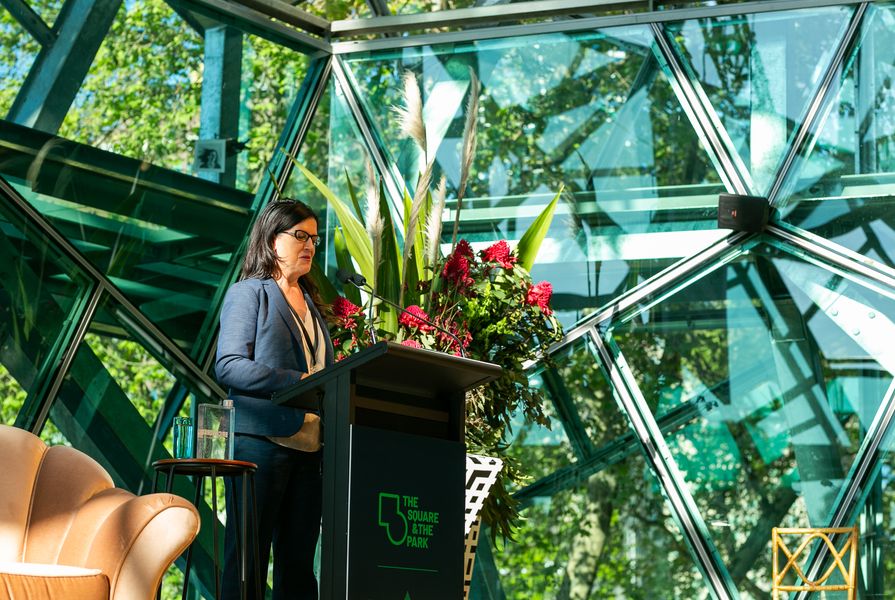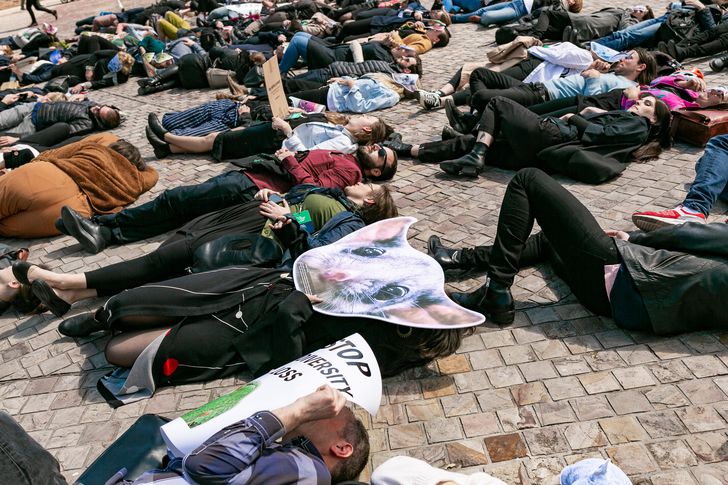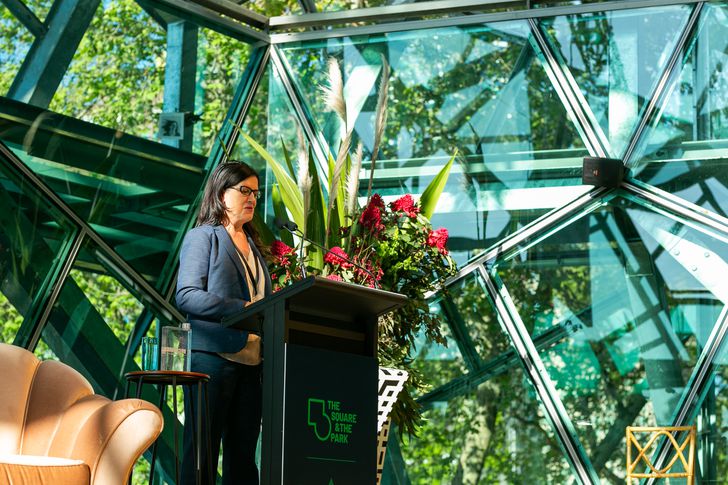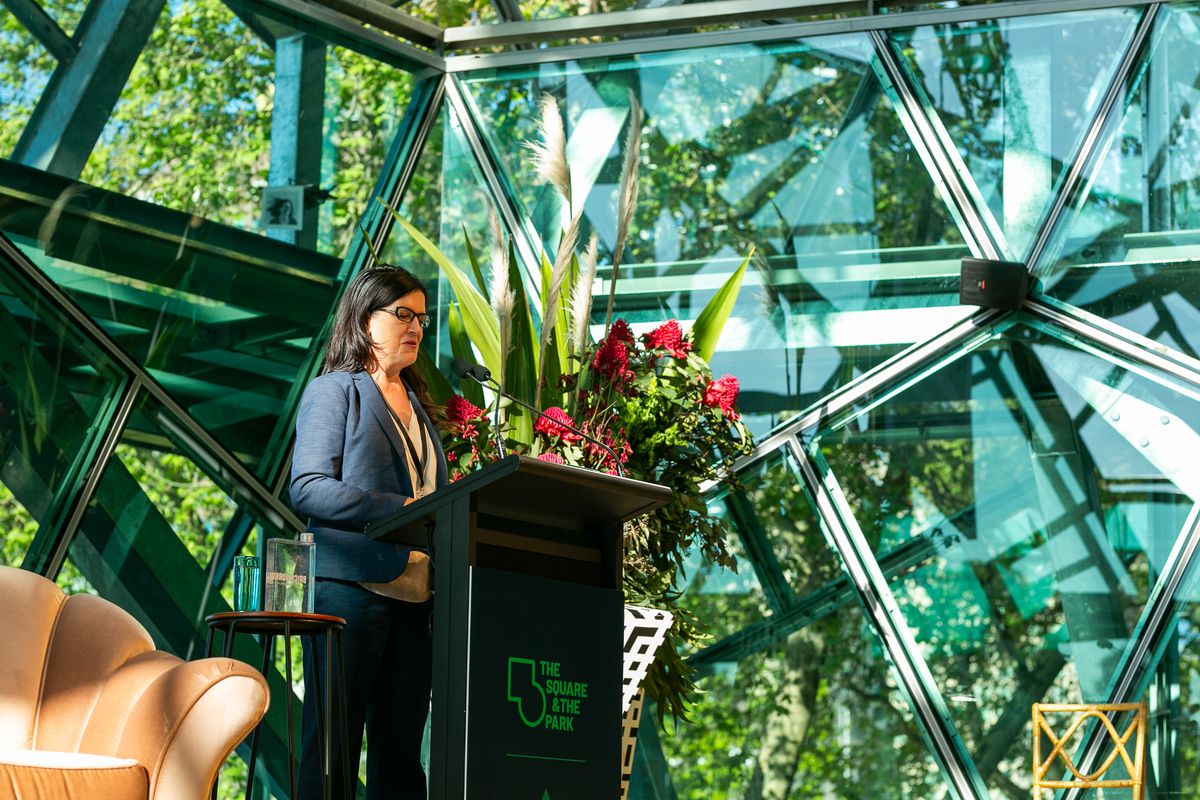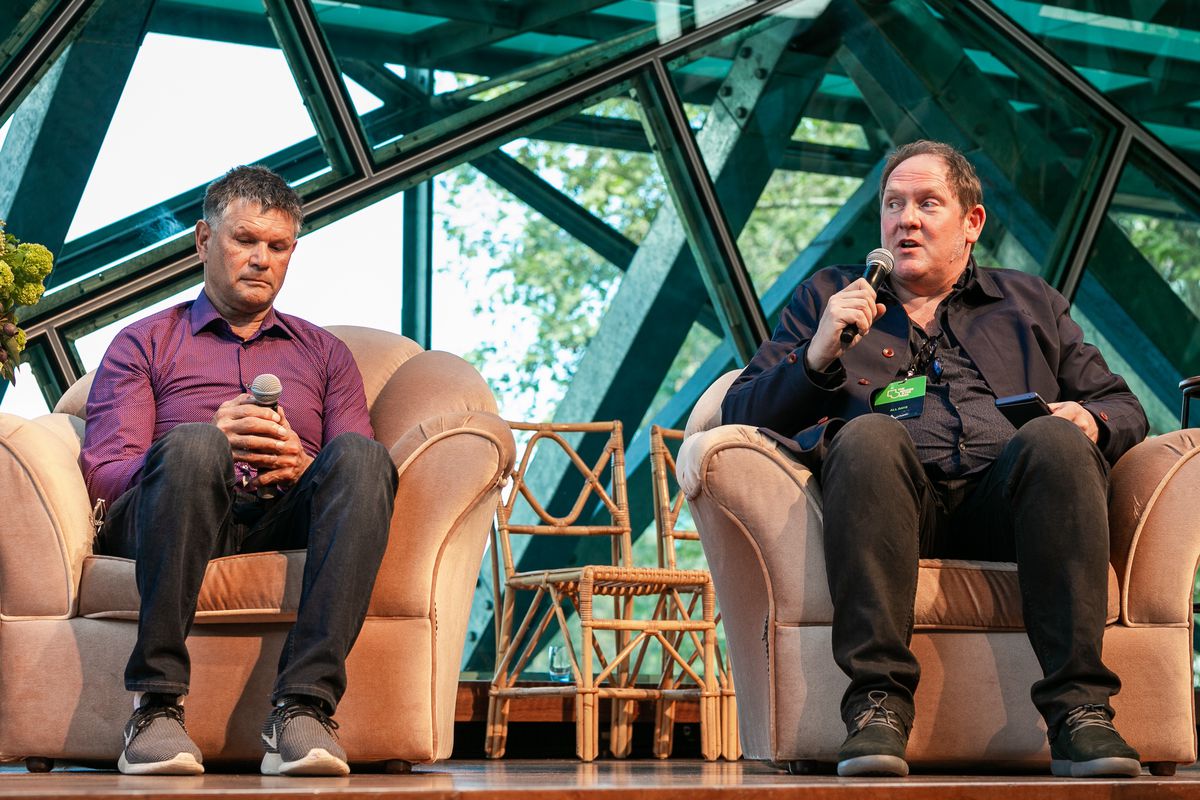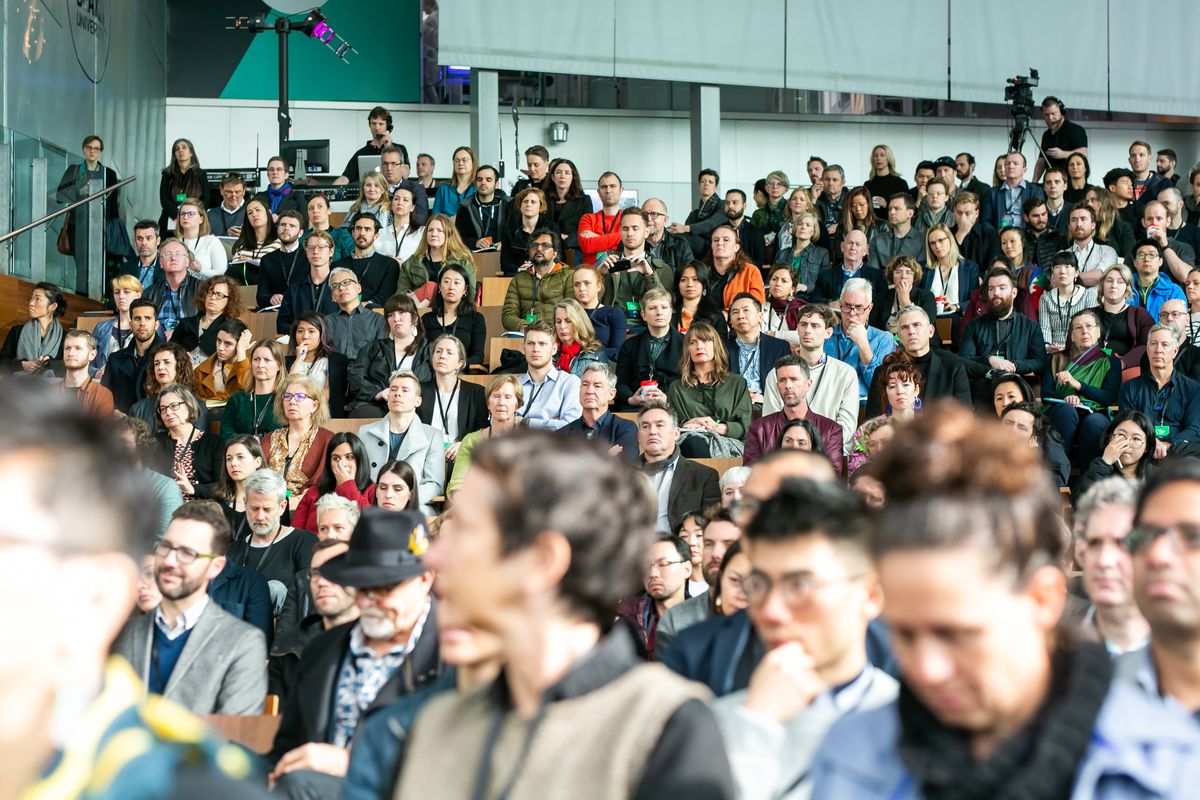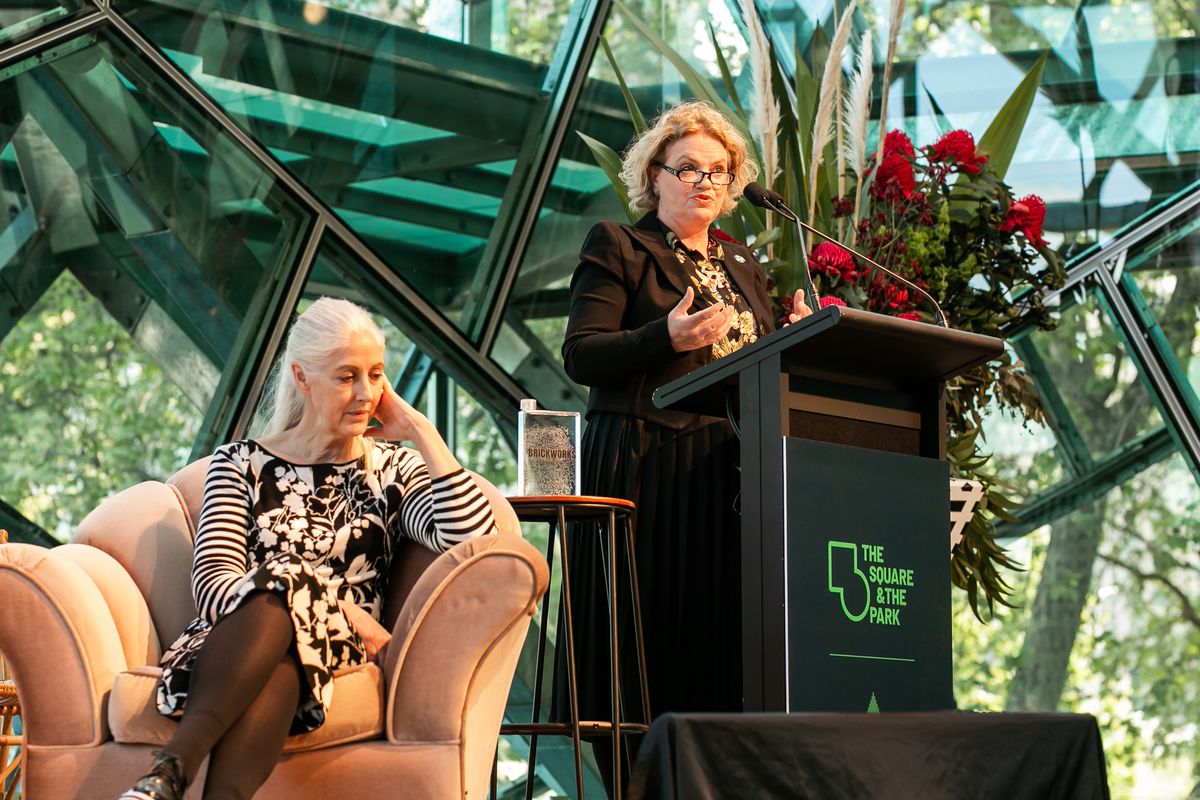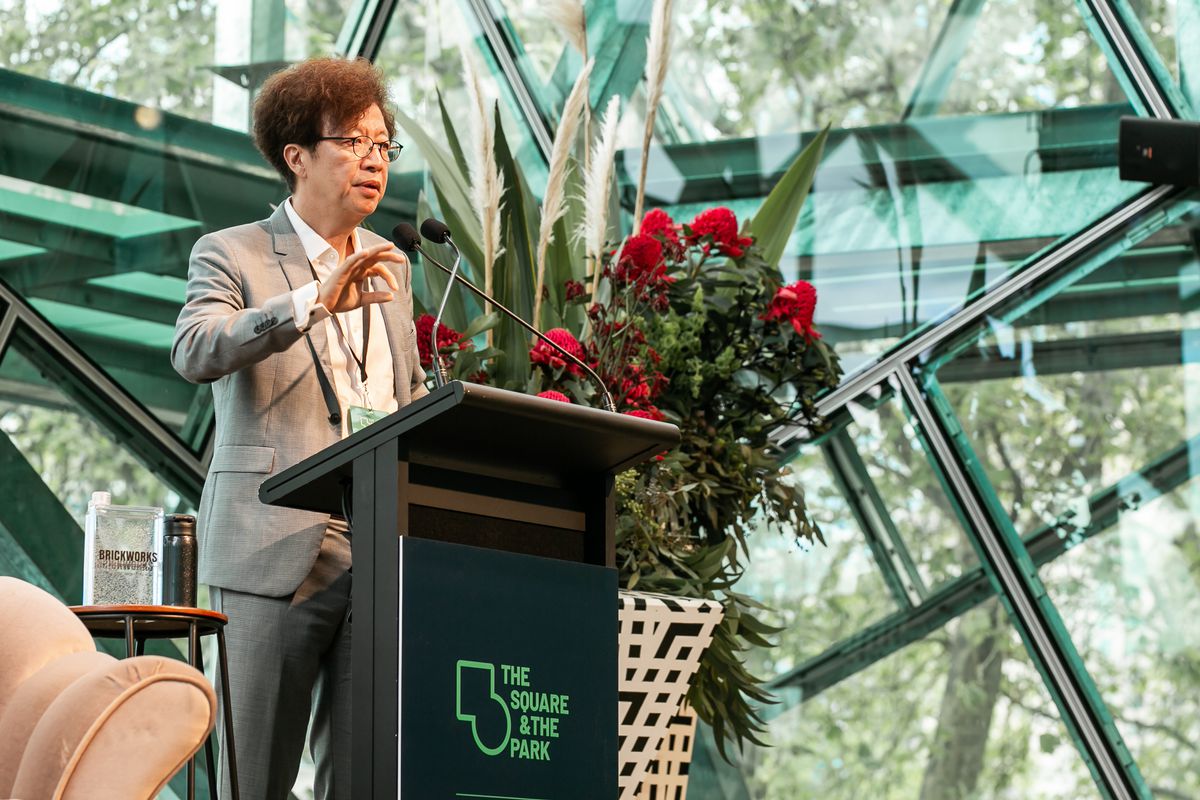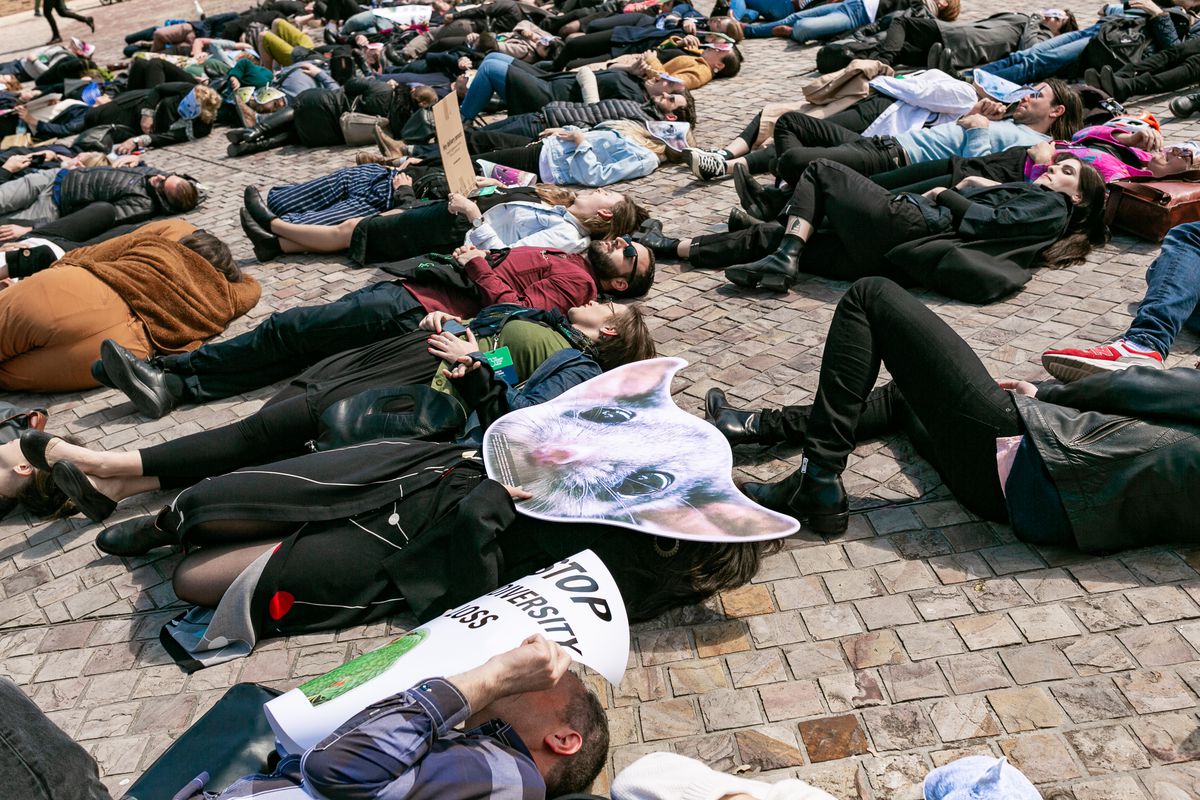The sixth AILA International Festival of Landscape Architecture: The Square and the Park was convened in the splendid Deakin Edge theatre, situated in a square (Federation Square), overlooking a park (Birrarung Marr). Across a well-paced two-day program with a mix of presentation formats and topics, international speakers brought global and regional perspectives on contemporary issues of contextualizing, designing, delivering and managing exemplary urban landscape projects. These were balanced with shorter talks from local academics and practitioners. The line-up included comic interludes, a debate, a question and answer session with speakers, along with generous amounts of time for breaks, good food and coffee, chats with sponsors and exchanges with professional colleagues. And in a piece of performance activism, delegates were directed out to Fed Square to express solidarity with the climate protests happening concurrently around the country. We took a stand and lay down in the square!
Delegates participated in a biodiversity “die-in”, protesting against the impacts of urban development on biodiversity.
Image: Jessica Prince
The first day of the festival commenced with a stirring opening by Aunty Zeta and Aunty Jeanette who welcomed us to the Country of the Kulin Nation. Speaking and singing eloquently, they imparted the four values of First Nations peoples: to celebrate, honour, respect and learn. Jason Kim of the Victorian government, Department of Environment, Land, Water and Planning followed them, challenging us to “make something bold and beautiful … with your Aboriginal partners.”
Günther Vogt, Swiss landscape architect and professor at ETH Zurich, was the first of the international keynotes. He asked, rhetorically, “Why do landscape architects want to be artists?” and then proceeded to illustrate his talk with examples of his projects – beautiful, artistic landscape compositions of varying contexts and sizes. A key message of Vogt’s talk was that “Europe is on the breaking point,” with the looming climate emergency and rising sea levels set to inundate more than one hundred cities around the edges of the Mediterranean Sea.
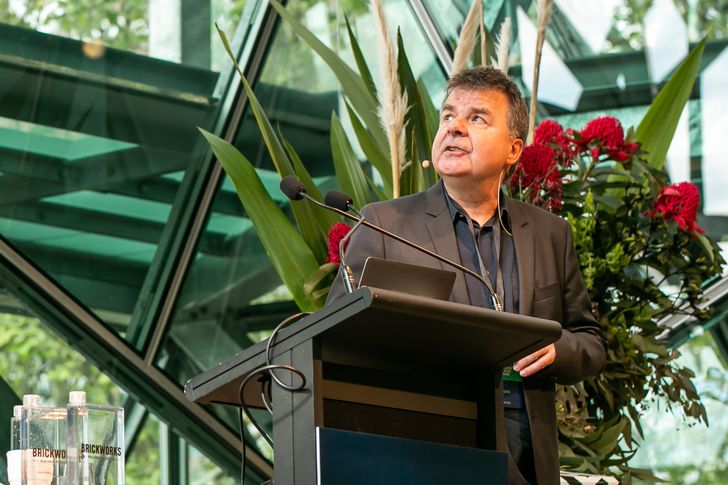
Günther Vogt drew attention to the climate change emergency and rising sea levels in the Mediterranean Sea.
Image: Jessica Prince
Professor Kyung-Jin Zoh of Seoul National University and chief advisor for Parks and Green Space to the Seoul Metropolitan Government presented a South Korean perspective on the festival’s theme. Although the cities of his country have, since ancient times, evolved in response to dramatic landscape settings, in the twenty-first century, Zoh asserted, designers may have to be more responsive to political agendas, in which the major urban transformations of “landmark” projects are seen by politicians and officials as an “easy way to win people’s positive support.”
Identifying four trends in contemporary park design – water, waste, diversity and pleasure – Julia Czerniak, associate dean and professor of architecture at Syracuse University, examined three projects to demonstrate “the agency of landscape architects to lead complex teams and elevate [the design of the public realm.]” For each project – Brooklyn Bridge Park (Michael Van Valkenburgh Associates), Living Breakwaters (Scape) and the Seattle waterfront redevelopment (James Corner/Field Operations) – Czerniak deftly mapped the vision, leadership and resources that elevated the project “from the practical to the poetic.” She acknowledged that as designers, we advocate for form, beauty and pleasure in our projects, but are ever aware that we must also deliver essential ecosystem services. Czerniak pointed out a “shift in ethics” from the anthropocentric to the biocentric, that is, from a focus on humans to a more inclusive approach addressing the needs of all species, and touched on landscape “performance” versus “appearance.”
Festival keynote speaker Julia Czerniak spoke of a shift from designing for humans to designing for all living beings.
Image: Jessica Prince
Short, fifteen minute “State of the Nation” talks were innovative, intermittent program elements that continually brought the focus back to Australia. Each speaker presented a critique/commentary on a seminal landscape design project from the 1990s, the creative directors having identified this time period as the point when many new practices emerged in Australia, bringing a concurrent shift in the scale of projects being undertaken. Importantly, the selected projects had by now also been in the ground for more than twenty years. These were instructive presentations for both professional veterans and the younger contingent in the audience to reflect on the combination of processes that resulted in this work – design, construction, politics, ongoing management – and to contemplate their significance in the canon of the landscape architecture profession in Australia.
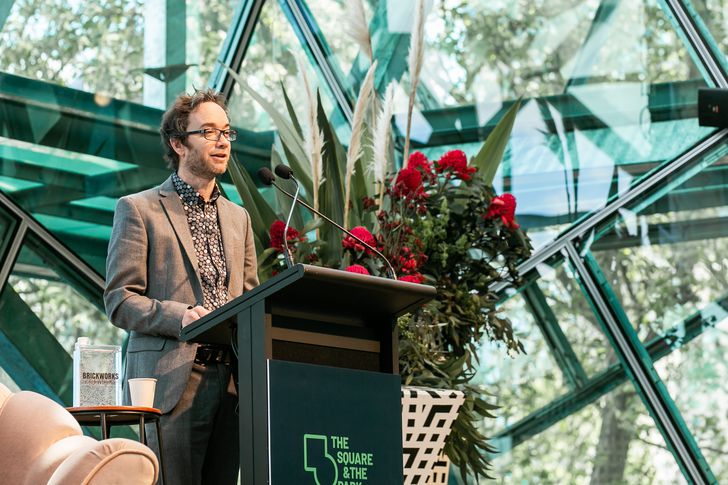
Perth-based academic Julian Bolleter’s talk focused on a series of proposals for the city’s foreshore produced during the 1990s.
Image: Jessica Prince
Dr Richard Walley, OAM, Indigenous artist and cultural advisor, described how in Western Australia, the Noongar people’s “six seasons cycle” could embed a cultural narrative into an urban landscape design process and guide the necessary collaboration for a successful co-creation process. His work with Aspect Studios on the award-winning Yagan Square was testament to this way of working.
In the program’s final plenary presentation, Julian Raxworthy presented key ideas from his 2018 book, Overgrown, in which he investigates the tension between landscape maintenance and design – how maintenance regimes change plants and design intentions over time. Though not specifically addressing the typology of the square or the park, Raxworthy’s propositions provided a credible landing point for the conclusion of the festival presentations.
Numerous parallel activities occurred before, during and after the formal festival program. These ranged from a special student-focused program, an international design competition, site visits hosted by sponsors and special presentations. Integrating these associated events and activities into the programming provided additional ways to engage with the program’s themes and extended its reach well beyond the walls of Deakin Edge.
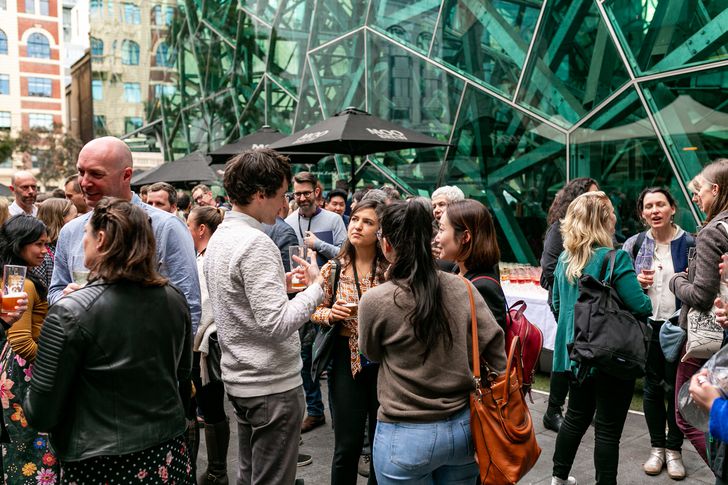
Conference delegates and speakers enjoyed a post-festival drink in the surrounds of Federation Square.
Image: Jessica Prince
Offering their final reflections at the end of the conference, the 2019 festival’s trio of creative directors, Jillian Wallis, Kirsten Bauer and Cassandra Chilton noted, they had wanted the festival program to “hit a sweet spot,” somewhere between an academic and a professional conference. On the whole, the team achieved this goal, delivering a provocative, reflective, informative, inquisitive and engaging program of events.
The 2019 International Festival of Landscape Architecture was held at Federation Square, Melbourne from 10 to 13 October 2019.

